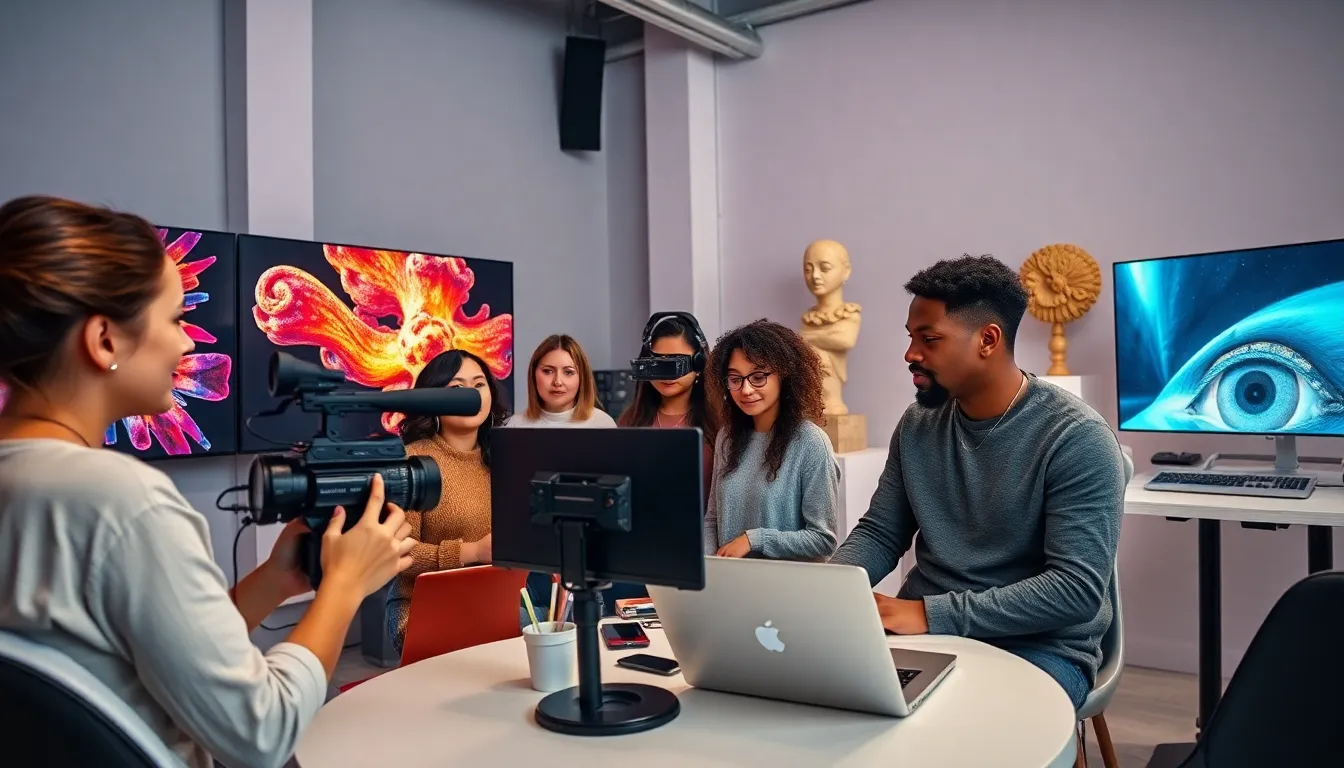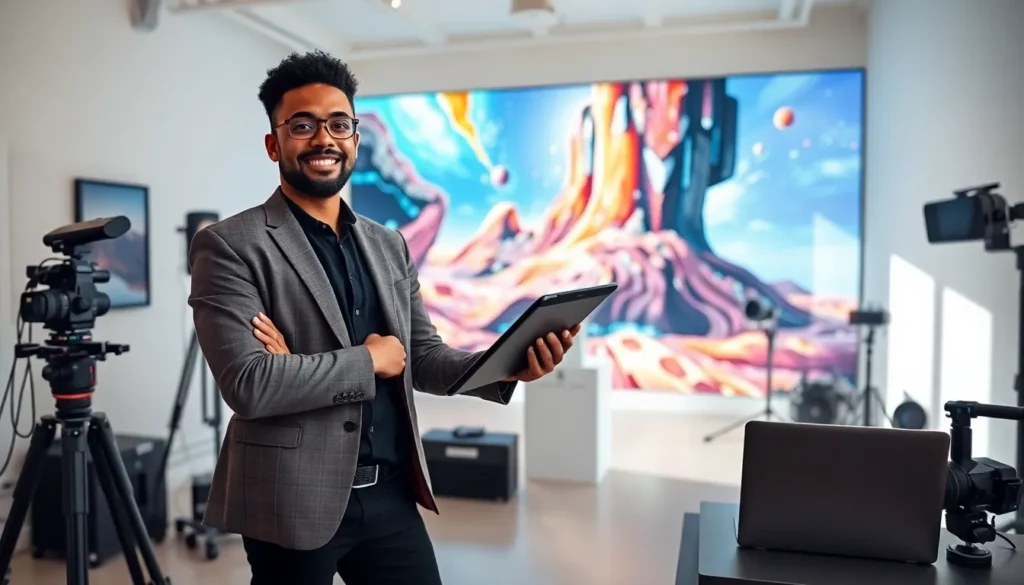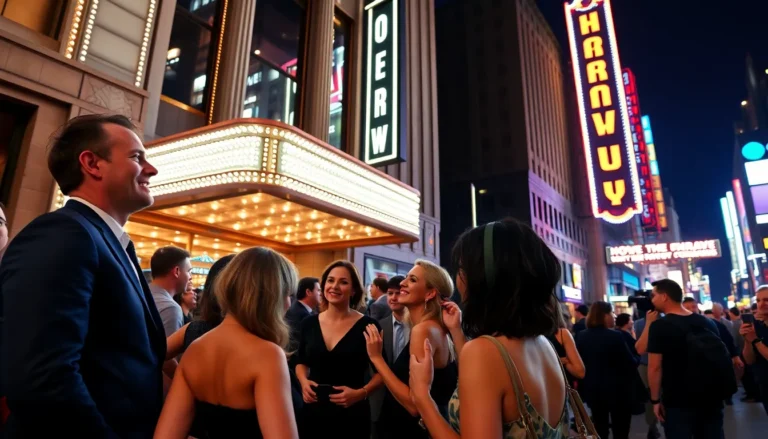In a world where smartphones reign supreme and streaming services battle for our attention, the arts are having a groundbreaking romance with technology. Imagine a painter stepping back to admire their digital mural, or a musician remixing sounds from across the globe, all thanks to advancements in audio and video technology. It’s a match made in heaven. This article explores this riveting relationship, diving deep into how the two spheres influence each other and shaping the future of communication in the arts. Ready to unravel a new narrative? Let’s go.
Table of Contents
ToggleThe Intersection of Arts and Technology

Evolution of Audio/Video Technology in the Arts
The dynamic landscape of audio and video technology has transformed the artistic arena in fascinating ways. Once, an artist needed only brush and canvas, or a simple microphone and tape recorder. Now, technology is a collaborator. From high-definition cameras to virtual reality environments, creators can explore audacious new methods to express their imaginative visions.
Consider how film has evolved. Today’s filmmakers have an arsenal of editing tools like Adobe Premiere Pro and Final Cut Pro, allowing intricate storytelling that was once the exclusive domain of premium studios. Also, the rise of platforms like YouTube or Vimeo facilitates artists in reaching audiences well beyond traditional galleries and theaters.
Impact of Digital Media on Artistic Expression
Digital media isn’t just a tool: it’s a new medium. Think of how artists use Instagram to create visually captivating stories that go viral. They’re not merely sharing art: they’re forging an interactive experience, blurring the lines between art and audience. A sculpture can now be viewed from all angles in a virtual tour, and music can transcend genres, thanks to innovative sound mixing technologies.
For instance, interactive installations use sensors to respond to viewer movements, creating a dialogue between the artwork and its beholder. This engagement enhances emotional responses, cementing digital media’s place alongside traditional forms as legitimate catalysts for expression. Artists today can collaborate in real time, often across continents, and craft projects that were inconceivable a generation ago.
Communications in the Arts Sector
Role of Social Media in Art Promotion
Social media has emerged as a cornerstone of art promotion, changing the way artists communicate with both fans and fellow creators. Platforms like Instagram and TikTok serve as virtual galleries, enabling artists to showcase their work instantly. It’s not just about likes, though: artists can receive immediate feedback, allowing for more nuanced understanding of audience tastes and preferences.
Of course, the practical implications are huge. Emerging artists no longer need extensive networking to gain visibility: a single viral post can lead to gallery exhibitions and collective projects. This democratization of opportunities encourages more diverse voices within the arts, shaping a vibrant tapestry of global creativity.
Emerging Trends in Arts Communication
As digital platforms evolve, so do the strategies artists employ. More than ever, storytelling takes center stage. Engaging narratives about the creation process can distribute a richer context around the work itself. Podcasts on art-making experiences or behind-the-scenes videos provide an intimate look that fosters deeper connections with audiences.
Besides, the synergy between communication and collaboration technologies enables new models for remote exhibitions, like virtual reality gallery tours. These innovations redefine accessibility, allowing users from any corner of the globe to engage with art and culture.
Future Directions in Arts, Audio/Video Technology & Communications
Innovations Shaping the Future
As we look to the horizon, innovation continues to drive the arts and technology partnership. Artificial Intelligence (AI) is making its mark, from algorithms that assist with creative decisions to tools that analyze market trends. Artists now have access to advanced creation tools that adapt to their unique styles and preferences, enhancing both the quality and diversity of artistic output.
Also, the emergence of immersive technologies like Augmented Reality (AR) and Virtual Reality (VR) will redefine how people perceive and interact with art. Imagine walking through a painting or collaborating with another artist in a shared digital space, regardless of physical distance. The possibilities are genuinely astounding.
Challenges and Opportunities Ahead
Even though exciting opportunities, challenges loom on the horizon. Artists and creators face hurdles in navigating digital copyright laws and ensuring fair compensation in online spaces. Also, as the art market becomes more saturated with digital content, distinguishing oneself has never been more crucial. Yet, this throws down a gauntlet: adapt or fade into the background.
But, it is in challenges that innovation thrives. Learning to use technology mindfully can unleash creativity and foster community engagement. As more artists embrace learning and collaboration, new paradigms in the art world will surely emerge.





